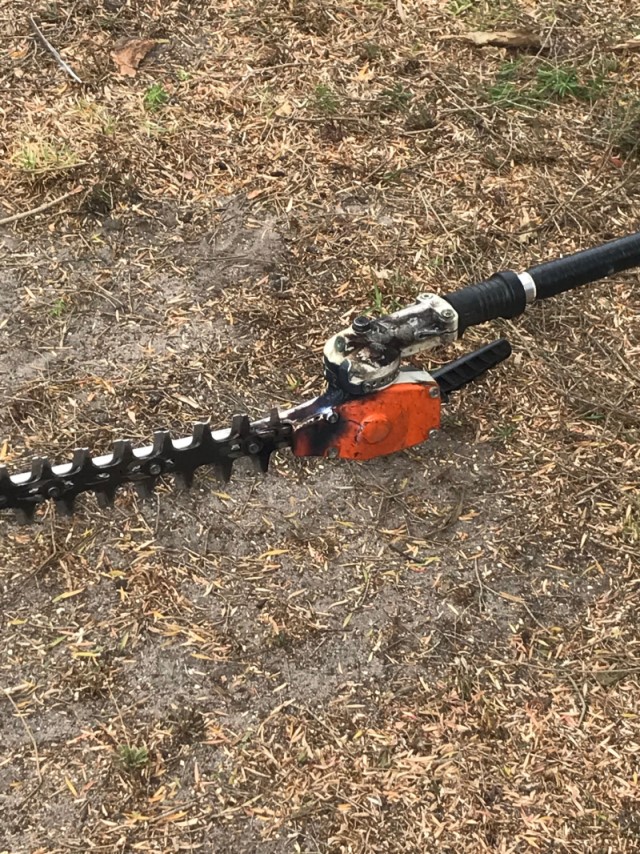Published 2019-08-06
Background
In March 2019, a vegetation management worker was pruning nature strip trees for a municipal council.
The work was being performed from an Elevated Work Platform (EWP) and included clearing trees from overhead electric lines.
A Safety Observer was being used for this work. When slewing, the basket of the EWP a hedger tool that was stowed in a vertical position behind the EWP Operator made contact with a bare low voltage (LV) overhead electricity conductor.
The EWP Operator and the Safety Observer did not notice this contact. As the EWP Operator continued to slew the EWP basket, the conductor was brought into contact with another adjacent conductor causing them to clash; one of the conductors fell to the ground.
The personnel involved in the incident contacted the electricity distribution business fault centre to advise it of the fallen conductor. While waiting for the electricity distribution business to arrive, witches hats were positioned around the fallen conductor to restrict access. No injuries were reported.
 Burn marks on hedger tool that contacted LV electricity conductor
Burn marks on hedger tool that contacted LV electricity conductor
Investigation findings
The investigation of this incident found: The EWP operator held a Certificate II in ESI – Powerline Vegetation Control, however, had not completed training electives appropriate for the task being performed.
Both the body and tool Safe Approach Distances required to conduct the work safely were not applied correctly.
A Safety Observer was deployed, however, they could not clearly see the hedger tool stowed in the EWP.
Key lessons
- Always maintain the appropriate body and tool Safe Approach Distances when clearing trees to keep them clear of electric lines
- Regularly reassess worksites for hazards when completing electric line clearance work; particularly when aloft in EWPs
- Ensure that all personnel are appropriately trained to complete the tasks they are employed to perform
- Tools and equipment should be securely stowed and checked regularly when working near power lines
- Make sure Safety Observers are positioned so they can clearly see the whole work environment
- Make sure personnel are aware of, and inducted into safe work and emergency management procedures.
Important information
The ESV training approval statement outlines the minimum training requirement for non-electrical vegetation management workers:
It requires that an employer shall ensure the training electives provided to vegetation management workers are appropriate to the tasks they shall be carrying out.
Organisations should use the advice of a Registered Training Organisations to inform their initial and refresher training programmes to ensure they meet the requirements of the training statement.
When a vegetation management worker is clearing vegetation on behalf of a municipal council, they must comply with the ESV electrical safety rules:
Within the rules, it specifies the body, tool, equipment and vegetation Safe Approach Distances that should be applied to maintain appropriate safety standards to complete electric line clearance work safely.
Failing to maintain the Safe Approach Distances may place workers at risk of harm. Working near live high and low voltage electric lines is dangerous.
A vegetation management worker was electrocuted in February 2019 when they made contact with uninsulated low voltage electric lines.
The incident described in this safety alert could have ended with the workers being seriously harmed or electrocuted.
Date: 15/12/2025 0:20
Controlled document
The currency and accuracy of this document cannot be guaranteed once printed or saved to a storage device. If in doubt, please check the ESV website for the current version.
Reviewed
